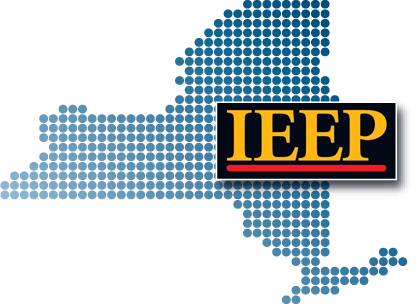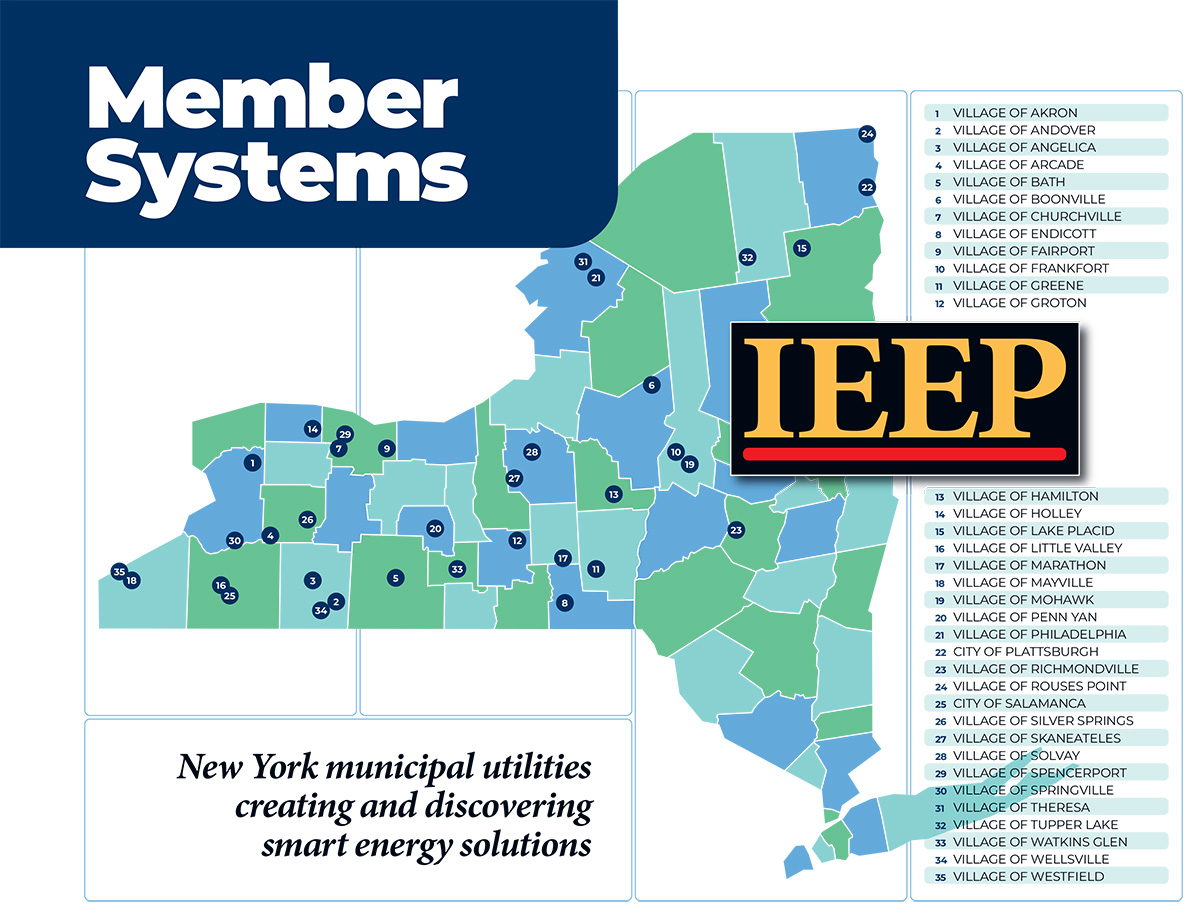
 This program option offers incentives for customers who incorporate energy efficiency measures into the construction of a new home. An ENERGY STAR® home with an energy rating of 86 or above will reduce energy costs, increase comfort levels and improve the environment for years to come.
This program option offers incentives for customers who incorporate energy efficiency measures into the construction of a new home. An ENERGY STAR® home with an energy rating of 86 or above will reduce energy costs, increase comfort levels and improve the environment for years to come.
 Commercial New Construction Opportunities provide the opportunity to incorporate energy efficiency measures into a new facility or an addition to the existing building. Measures include lighting and lighting controls, HVAC equipment, variable speed drives, and motors.
Commercial New Construction Opportunities provide the opportunity to incorporate energy efficiency measures into a new facility or an addition to the existing building. Measures include lighting and lighting controls, HVAC equipment, variable speed drives, and motors.
 Appliance Recycling offers incentives to consumers to recycle old working refrigerators and replace them with ENERGY STAR® products. The IEEP will schedule pick-up of the old refrigerator, properly recycle it, and provide an incentive to the customer for doing so.
Appliance Recycling offers incentives to consumers to recycle old working refrigerators and replace them with ENERGY STAR® products. The IEEP will schedule pick-up of the old refrigerator, properly recycle it, and provide an incentive to the customer for doing so.
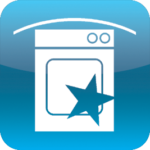 Appliance Advantage provides incentives of up to $125 when replacing existing appliances with ENERGY STAR®-labeled versions incorporating advanced technologies that use 10-50% less energy and water than standard models.
Appliance Advantage provides incentives of up to $125 when replacing existing appliances with ENERGY STAR®-labeled versions incorporating advanced technologies that use 10-50% less energy and water than standard models.
 There are a range of energy efficient street lighting opportunities that may deliver benefits to local government authorities, ratepayers, network providers, drivers, pedestrians and the community as a whole. Significant reductions in greenhouse pollution—and long-term savings—can often be achieved at minimal cost.
There are a range of energy efficient street lighting opportunities that may deliver benefits to local government authorities, ratepayers, network providers, drivers, pedestrians and the community as a whole. Significant reductions in greenhouse pollution—and long-term savings—can often be achieved at minimal cost.
 Thermal infrared imaging has become a valuable tool in performing energy audits in residential and commercial applications. The infra red camera displays heat energy as a visual image. This program measure provides an incentive for infrared cameras for energy use.
Thermal infrared imaging has become a valuable tool in performing energy audits in residential and commercial applications. The infra red camera displays heat energy as a visual image. This program measure provides an incentive for infrared cameras for energy use.
 Reductions in electric usage by major electricity consumers, at the request of the utility, when wholesale energy market prices peak or system reliability is jeopardized due to high demand.
Reductions in electric usage by major electricity consumers, at the request of the utility, when wholesale energy market prices peak or system reliability is jeopardized due to high demand.
 The SCADA program is an advanced, real-time information system that provides an integrated solution for data acquisition, data logging, human-machine interface, data management, networking and real-time/historical trending and report generation.
The SCADA program is an advanced, real-time information system that provides an integrated solution for data acquisition, data logging, human-machine interface, data management, networking and real-time/historical trending and report generation.
 This program develops customer relationship management systems for utility companies, enabling them to quickly and accurately maintain customer information and billing.
This program develops customer relationship management systems for utility companies, enabling them to quickly and accurately maintain customer information and billing.
 The IEEP provides resources and technical assistance to commercial and industrial customers who need support in evaluating facility improvements on their operations.
The IEEP provides resources and technical assistance to commercial and industrial customers who need support in evaluating facility improvements on their operations.
 Traffic control is one of the best uses of LED technology, which produces light in desired colors such as red, amber and green. When stoplights burn out, replacing them is inconvenient and the loss of traffic control can be dangerous—but LED traffic lights can last as long as 10 years, compared to roughly two years for their conventional counterparts. Similar advances in LED technology provide better options for municipal streetlights. LED bulbs are brighter than incandescent lamps, while consuming roughly 10% of the power.
Traffic control is one of the best uses of LED technology, which produces light in desired colors such as red, amber and green. When stoplights burn out, replacing them is inconvenient and the loss of traffic control can be dangerous—but LED traffic lights can last as long as 10 years, compared to roughly two years for their conventional counterparts. Similar advances in LED technology provide better options for municipal streetlights. LED bulbs are brighter than incandescent lamps, while consuming roughly 10% of the power.
 Smart Metering is the technology of automatically collecting data from meters (water, gas, electric) and transferring that data to a central database for billing and/or analysis. Billing can be based on actual consumption, rather than on an estimate based on previous consumption, thus giving customers better control of their electric energy usage.
Smart Metering is the technology of automatically collecting data from meters (water, gas, electric) and transferring that data to a central database for billing and/or analysis. Billing can be based on actual consumption, rather than on an estimate based on previous consumption, thus giving customers better control of their electric energy usage.
 Solar Hot Water Heaters are cost effective ways to generate hot water. They can be used in any climate and use the sun as fuel to heat water that can then be used throughout a home.
Solar Hot Water Heaters are cost effective ways to generate hot water. They can be used in any climate and use the sun as fuel to heat water that can then be used throughout a home.
 Winds are created by uneven heating of the atmosphere by the sun, irregularities of the earth’s surface, and the earth’s rotation. Winds are strongly influenced and modified by local terrain, bodies of water, weather patterns, vegetative cover and other factors. The wind flow, or motion of energy when harvest ed by wind turbines, can be used to generate electricity.
Winds are created by uneven heating of the atmosphere by the sun, irregularities of the earth’s surface, and the earth’s rotation. Winds are strongly influenced and modified by local terrain, bodies of water, weather patterns, vegetative cover and other factors. The wind flow, or motion of energy when harvest ed by wind turbines, can be used to generate electricity.
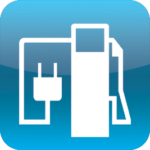 Hybrid technologies improve fuel efficiency and provide fuel savings compared to normal, petrol-only vehicles. Hybrids are powered by a combination of petrol and electricity. All hybrids use regenerative braking: energy is put back into the battery when braking, thus improving energy efficiency and reducing brake wear.
Hybrid technologies improve fuel efficiency and provide fuel savings compared to normal, petrol-only vehicles. Hybrids are powered by a combination of petrol and electricity. All hybrids use regenerative braking: energy is put back into the battery when braking, thus improving energy efficiency and reducing brake wear.
 Also known as cogeneration, CHP is an efficient, clean and reliable approach to generating power and thermal energy from a single fuel source. A CHP system, designed to meet the thermal and electrical base loads of a facility, can greatly increase the facility’s operational efficiency and decrease energy costs. CHP also reduces the emission of greenhouse gases which contribute to global climate change.
Also known as cogeneration, CHP is an efficient, clean and reliable approach to generating power and thermal energy from a single fuel source. A CHP system, designed to meet the thermal and electrical base loads of a facility, can greatly increase the facility’s operational efficiency and decrease energy costs. CHP also reduces the emission of greenhouse gases which contribute to global climate change.
 Ground source heat pumps are electrically powered systems that tap the stored energy of the greatest solar collector in existence: the earth. These systems use the earth’s relatively constant temperature to provide heating, cooling, and hot water for homes and commercial buildings.
Ground source heat pumps are electrically powered systems that tap the stored energy of the greatest solar collector in existence: the earth. These systems use the earth’s relatively constant temperature to provide heating, cooling, and hot water for homes and commercial buildings.
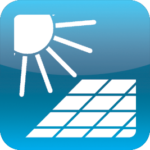 A photo-voltaic (PV) or solar cell is the basic building block of a solar electric system. An individual PV cell is usually quite small and produces about one or two watts of power. To boost output, PV cells are connected to form larger units called modules which, in turn, can be connected to form even larger units called arrays, which can be inter connected to produce more power. PV systems can be built to meet almost any electric power need, small or large. PV projects are being implemented in schools as educational projects as well as power sources.
A photo-voltaic (PV) or solar cell is the basic building block of a solar electric system. An individual PV cell is usually quite small and produces about one or two watts of power. To boost output, PV cells are connected to form larger units called modules which, in turn, can be connected to form even larger units called arrays, which can be inter connected to produce more power. PV systems can be built to meet almost any electric power need, small or large. PV projects are being implemented in schools as educational projects as well as power sources.
 This IEEP program measure was developed to assist in upgrades to premium-efficiency motors, which contribute to marked reductions in energy consumption, motor heat, vibration and noise. Federal standards have increased to the point where all newly manufactured electric motors are highly efficient. Incentives for motor purchases were discontinued in 2016.
This IEEP program measure was developed to assist in upgrades to premium-efficiency motors, which contribute to marked reductions in energy consumption, motor heat, vibration and noise. Federal standards have increased to the point where all newly manufactured electric motors are highly efficient. Incentives for motor purchases were discontinued in 2016.
 As energy-efficient lighting becomes more prevalent, it is important that the products are disposed of in a safe, responsible manner. Compact fluorescent lights contain a small amount of mercury—the size of a pin drop—that allows the bulbs to burn efficiently. The IEEP helps design recycling programs for its member systems to prevent large accumulations of bulbs in landfills.
As energy-efficient lighting becomes more prevalent, it is important that the products are disposed of in a safe, responsible manner. Compact fluorescent lights contain a small amount of mercury—the size of a pin drop—that allows the bulbs to burn efficiently. The IEEP helps design recycling programs for its member systems to prevent large accumulations of bulbs in landfills.
 Trees help promote energy efficiency, prevent erosion, protect water supplies, create habitat for wildlife and filter harmful carbon dioxide from the air, replacing it with life-giving oxygen. Trees cool streets, sidewalks, and especially homes, resulting in significant energy savings. They also muffle noise and increase privacy. The IEEP provides incentives to restore and develop these valuable resources.
Trees help promote energy efficiency, prevent erosion, protect water supplies, create habitat for wildlife and filter harmful carbon dioxide from the air, replacing it with life-giving oxygen. Trees cool streets, sidewalks, and especially homes, resulting in significant energy savings. They also muffle noise and increase privacy. The IEEP provides incentives to restore and develop these valuable resources.
 Many processes or systems in commercial and residential buildings generate heat or energy that may be wasted. A heat reclamation system utilizes a heat exchanger to capture and transfer this heat into another useful source, reducing operation costs.
Many processes or systems in commercial and residential buildings generate heat or energy that may be wasted. A heat reclamation system utilizes a heat exchanger to capture and transfer this heat into another useful source, reducing operation costs.
 These appliances work like a refrigerator but in reverse. A small heat pump at the top extracts heat from the warm air around it, intensifies it with a compressor, delivers the heat to the water, and exhausts the cooler air. Drawing ambient air to do most of the work, they are very efficient. Because cooler air is exhausted from the heat pump, some models provide a degree of dehumidification to their surroundings.
These appliances work like a refrigerator but in reverse. A small heat pump at the top extracts heat from the warm air around it, intensifies it with a compressor, delivers the heat to the water, and exhausts the cooler air. Drawing ambient air to do most of the work, they are very efficient. Because cooler air is exhausted from the heat pump, some models provide a degree of dehumidification to their surroundings.
 Variable Speed Drives offer the ability to monitor and reduce energy consumption, foresee line and motor problems and gain fine speed and torque control. Consumers save energy by running motors at less than 100% output when full power isn’t needed, and are able to extract equipment condition and operating information for predictive maintenance and plant optimization.
Variable Speed Drives offer the ability to monitor and reduce energy consumption, foresee line and motor problems and gain fine speed and torque control. Consumers save energy by running motors at less than 100% output when full power isn’t needed, and are able to extract equipment condition and operating information for predictive maintenance and plant optimization.
 Commercial Refrigeration offers equipment upgrades for commercial customers with walk-in coolers, refrigeration with glass doors, and other cooling applications. These upgrades provide improved operating control and increased reliability, along with an increase in energy efficiency.
Commercial Refrigeration offers equipment upgrades for commercial customers with walk-in coolers, refrigeration with glass doors, and other cooling applications. These upgrades provide improved operating control and increased reliability, along with an increase in energy efficiency.
 This program measure helps HEAP-eligible residential customers reduce usage by performing an energy evaluation survey on homes and providing appropriate resources to assist in reducing energy consumption. In addition, the Project Help component can assist low-income customers in paying fuel bills.
This program measure helps HEAP-eligible residential customers reduce usage by performing an energy evaluation survey on homes and providing appropriate resources to assist in reducing energy consumption. In addition, the Project Help component can assist low-income customers in paying fuel bills.
 This program measure reduces heating costs and improves the comfort level in homes and businesses. Buildings using electric heat, with insulation measuring 8″ thick or less, may be eligible for additional insulation and ventilation at no cost.
This program measure reduces heating costs and improves the comfort level in homes and businesses. Buildings using electric heat, with insulation measuring 8″ thick or less, may be eligible for additional insulation and ventilation at no cost.
 Heating, Ventilation, and Air Conditioning can account for a huge portion of a building’s energy usage. The IEEP supports improvements to these systems which can result in cost-effective energy savings, increased comfort for occupants, and improved system reliability.
Heating, Ventilation, and Air Conditioning can account for a huge portion of a building’s energy usage. The IEEP supports improvements to these systems which can result in cost-effective energy savings, increased comfort for occupants, and improved system reliability.
 This measure offers an interest buydown on home loans that invest in energy efficient improvements. For customers who apply and are pre-approved by the bank, and have approved plans for energy efficiency projects, the municipal electric utility will invest with the customer to reduce the interest rate of the loan. Qualifying home improvement loans must devote at least 50% of the total loan proceeds to energy efficient measures.
This measure offers an interest buydown on home loans that invest in energy efficient improvements. For customers who apply and are pre-approved by the bank, and have approved plans for energy efficiency projects, the municipal electric utility will invest with the customer to reduce the interest rate of the loan. Qualifying home improvement loans must devote at least 50% of the total loan proceeds to energy efficient measures.
 This enables emergency power systems to rely on generators or uninterruptible power supplies.
This enables emergency power systems to rely on generators or uninterruptible power supplies.
 Lighting improvements for commercial facilities are a continuously evolving technology. This program measure provides resources to commercial customers, helping them keep up with emerging lighting technologies.
Lighting improvements for commercial facilities are a continuously evolving technology. This program measure provides resources to commercial customers, helping them keep up with emerging lighting technologies.
 Proper home and building controls can reduce wasted energy loss by managing energy more precisely. Large buildings often have complex systems that need to be specified, installed, and calibrated properly by trained staff. The IEEP provides resources to help commercial building owners choose and/or maintain energy manage ment systems to optimize their energy systems.
Proper home and building controls can reduce wasted energy loss by managing energy more precisely. Large buildings often have complex systems that need to be specified, installed, and calibrated properly by trained staff. The IEEP provides resources to help commercial building owners choose and/or maintain energy manage ment systems to optimize their energy systems.
 Over a lifetime, the operation of an old refrigerator can produce up to 10 tons of CO2, a primary contributor to climate change. This program offers incentives to replace old working refrigerators with ENERGY STAR®-labeled versions. With each unit replaced, the equivalent CO2 emissions of two automobiles are eliminated.
Over a lifetime, the operation of an old refrigerator can produce up to 10 tons of CO2, a primary contributor to climate change. This program offers incentives to replace old working refrigerators with ENERGY STAR®-labeled versions. With each unit replaced, the equivalent CO2 emissions of two automobiles are eliminated.
 This program encourages commercial municipal electric customers to upgrade equipment with energy efficient replacements. Lighting and motors account for a significant portion of energy use in commercial buildings; upgrading this equipment can reduce operating costs while improving the appearance and operation of the facility. Incentives are provided for each technology that meets the minimum energy efficiency criteria. For projects costing $2,000 or less, pre-approval is not required.
This program encourages commercial municipal electric customers to upgrade equipment with energy efficient replacements. Lighting and motors account for a significant portion of energy use in commercial buildings; upgrading this equipment can reduce operating costs while improving the appearance and operation of the facility. Incentives are provided for each technology that meets the minimum energy efficiency criteria. For projects costing $2,000 or less, pre-approval is not required.
 Lighting has, in the past, represented up to 12% of total electric energy usage in a typical home. In recent years, rapid advancements in efficient lighting technologies have enabled residential customers to enjoy substantial savings, with LED (light-emitting diode) bulbs and fixtures gaining popularity for their adaptability and longevity.
Lighting has, in the past, represented up to 12% of total electric energy usage in a typical home. In recent years, rapid advancements in efficient lighting technologies have enabled residential customers to enjoy substantial savings, with LED (light-emitting diode) bulbs and fixtures gaining popularity for their adaptability and longevity.
